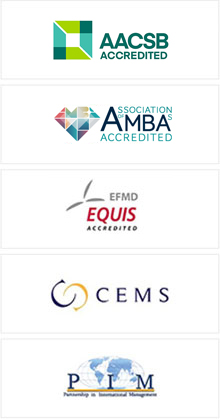Could teleportation, borrowing and destroying of museum objects take place at the National Museum?
Conventional museum practices were thrown out of the window when students formulated the future of museums.

Multidisciplinary teams from the IDBM programme grabbed this challenge together with the National Museum.
‘It is time for museums to change. The Millennials live in a world where experiences and interaction guide consumption. Digital technology enters museums while the surrounding society goes through continuous change’, states student of design Krista Kärki.
‘The National Museum has a tremendously huge and diverse treasure chest encompassing over a thousand years of time. Utilising it on our contemporary terms and for our needs is a huge opportunity’, says Director General of the National Museum Elina Anttila.
How should the National Museum seize the present and the future? This is the question students of International Design Business Management tried to figure out with open minds and without bowing down to authority.
Students of design, business and technology collaborated in workshops creating over 30 bold - and even wild - ideas, some of which were developed further.
Let’s destroy art – with an axe or with acid?
The vast collections of the National Gallery demand a lot of space. Why not make the objects more visible by taking them out of the museum? Airports, medical practices, offices of law and banks could borrow items for their premises. Bringing the objects into everyday life would effectively encourage discussion on museums and the past.
On the other hand, a proposal called Break the Rules turns the whole museum experience upside down by challenging audiences to reconsider what is meaningful and sacred about the past. In events called Smash the Arts the audience could vote on methods and tools for the museum to destroy its objects with. Would they use axes, hydraulics, wrecking balls or acid? The audience would be given a bit of lost history to take back home. A fictitious press release from the year 2022 has already been drafted in which the National Museum calls for people to destroy its objects - and simultaneously, a part of cultural history.
‘Students approached the project with passion, and I am delighted they dared to present also some provocative ideas’, states Assistant Professor Miikka J. Lehtonen.
The museum could entice children with workshops emphasising the meaning of empathy, tolerance and diversity. Pop-up museums in the city could encourage everyday encounters by introducing, for instance, vegan lifestyle.
‘Museums should not take visitors for granted, but continuously think of ways to develop the experience further. A museum visitor does not only want to read and see objects, but also touch and experience’, Krista Kärki says.
‘Various trends starting from digitisation shape the museum experience. Old environments could be recreated with virtual reality and provide time travel to the past’, says student of science Xuan Ma.
Mutual experiences with teleportation
On Facebook, over a million links are spread in 20 minutes, and Snapchat delivers over 10 billion videos daily. In a proposal called Better Together, the whole museum experience could be transferred to the other side of the globe.
‘People have a need to keep in touch with other cultures. Finnish museum visitors could teleport their favourite objects to South Korean museum visitors. Shared objects with their comments and information could be archived on a common platform, and anybody could collect them for their own pleasure or for research purposes’, Kärki points out.
When the students presented the results of their ten-week project to the National Museum, they were received with enthusiasm.
‘It was great to see how the students saw the museum as an active operator bridging the past with the present. Just as well as we create a better understanding of life in the Stone Age, we can also strengthen the understanding between different cultures in our current time. The proposals had a lot of tangible content for us to pursue further at the National Museum’, says Anttila.



